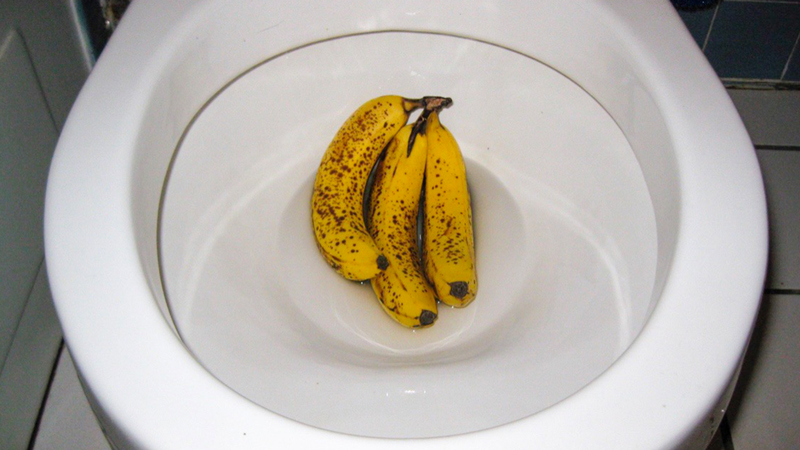Are You Capable to Dispose of Food Down the Toilet?
Are You Capable to Dispose of Food Down the Toilet?
Blog Article
They are making a number of great pointers on Is it safe to flush food (especially rice) down the toilet? in general in the article just below.

Introduction
Lots of people are frequently faced with the issue of what to do with food waste, particularly when it comes to leftovers or scraps. One typical question that arises is whether it's all right to flush food down the toilet. In this post, we'll look into the reasons why individuals may think about flushing food, the consequences of doing so, and different techniques for proper disposal.
Reasons why people might take into consideration flushing food
Absence of awareness
Some individuals may not understand the possible harm triggered by purging food down the commode. They may mistakenly believe that it's a safe method.
Convenience
Flushing food down the bathroom might appear like a quick and easy solution to getting rid of undesirable scraps, specifically when there's no neighboring trash bin available.
Negligence
Sometimes, individuals might merely choose to flush food out of large laziness, without considering the consequences of their activities.
Repercussions of flushing food down the toilet
Ecological impact
Food waste that winds up in rivers can contribute to pollution and injury aquatic ecological communities. Additionally, the water used to purge food can stress water sources.
Plumbing concerns
Purging food can lead to stopped up pipes and drains, triggering costly pipes repairs and inconveniences.
Types of food that ought to not be flushed
Fibrous foods
Foods with coarse appearances such as celery or corn husks can get entangled in pipes and trigger obstructions.
Starchy foods
Starchy foods like pasta and rice can take in water and swell, bring about clogs in pipes.
Oils and fats
Greasy foods like bacon or food preparation oils need to never be purged down the commode as they can solidify and cause blockages.
Correct disposal methods for food waste
Using a waste disposal unit
For homes outfitted with waste disposal unit, food scraps can be ground up and purged with the plumbing system. Nevertheless, not all foods are suitable for disposal in this way.
Recycling
Particular food packaging materials can be recycled, reducing waste and minimizing ecological impact.
Composting
Composting is an eco-friendly means to throw away food waste. Organic products can be composted and utilized to enhance soil for horticulture.
The value of correct waste monitoring
Decreasing ecological damage
Proper waste administration techniques, such as composting and recycling, assistance decrease pollution and protect natural resources for future generations.
Safeguarding pipes systems
By staying clear of the technique of flushing food down the toilet, home owners can protect against pricey pipes repair services and keep the honesty of their pipes systems.
Final thought
In conclusion, while it might be alluring to flush food down the commode for ease, it is essential to understand the prospective repercussions of this action. By adopting correct waste monitoring practices and taking care of food waste properly, individuals can contribute to healthier plumbing systems and a cleaner atmosphere for all.
FLUSH FOOD DOWN THE TOILET?
FLUSHING FOOD CAN CAUSE BLOCKED DRAINS IN YOUR HOME
All of the plumbing fixtures in your home are connected to the same sewer pipe outside of your home. This outdoor sewer pipe is responsible for transporting all the wastewater from your home to the Council sewer mains. Even small pieces of food that go down the kitchen sink can cause problems for your sewer. It should therefore be obvious that flushing larger bits of food, such as meat, risks a clog in either the toilet itself or the sewer pipes. Flushing greasy food is even more problematic because oil coagulates when it cools, coating the interior lining of your pipes.
THE TOILET IS NOT A BIN
Food isn’t the only thing that people shouldn’t be flushing down the toilet. People use the toilet to dispose of all kinds of things such as tampons, makeup wipes, dental floss, kitty litter and even underwear. Water goes to great lengths to educate residents about the high costs and stress placed on wastewater treatment systems simply from people flushing the wrong stuff down the toilet. It costs taxpayers millions of dollars each year, and homeowners thousands in blocked drain repairs.
FLUSHING FOOD IS A WASTE OF WATER
Flushing food is a waste of our most precious resource - water. In June this year Level 1 water restrictions were introduced to protect water supply from drought conditions. Much of New South Wales continues to be affected by prolonged drought with recent figures revealing up to 97 per cent of the state remains in drought. Depending on whether you have a single or dual flush toilet, every single flush uses between five and 11 litres of water. In the current climate this is a huge amount of water to be wasting on flushing food that should be placed in the bin (or better yet, the compost).
https://www.jabplumbingsolutions.com.au/blog/can-you-flush-food-down-the-toilet

We are very drawn to Think Twice Before Flushing Food Down Your Toilet and I hope you enjoyed my blog entry. Be sure to pause to share this post if you liked it. Thank you so much for your time invested reading it.
Visit Site Report this page